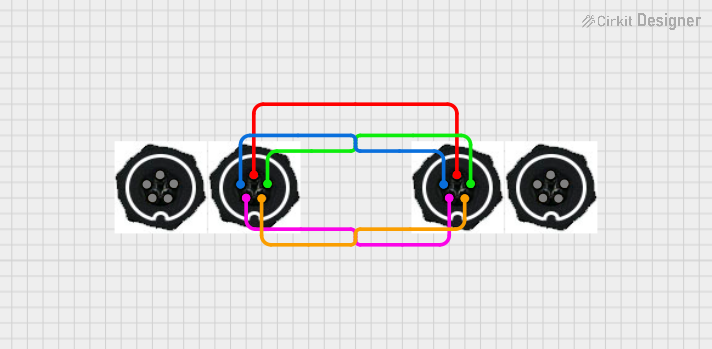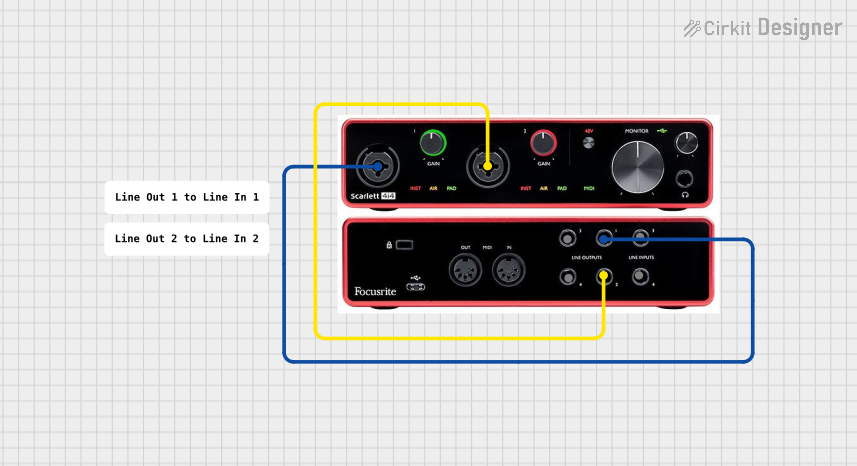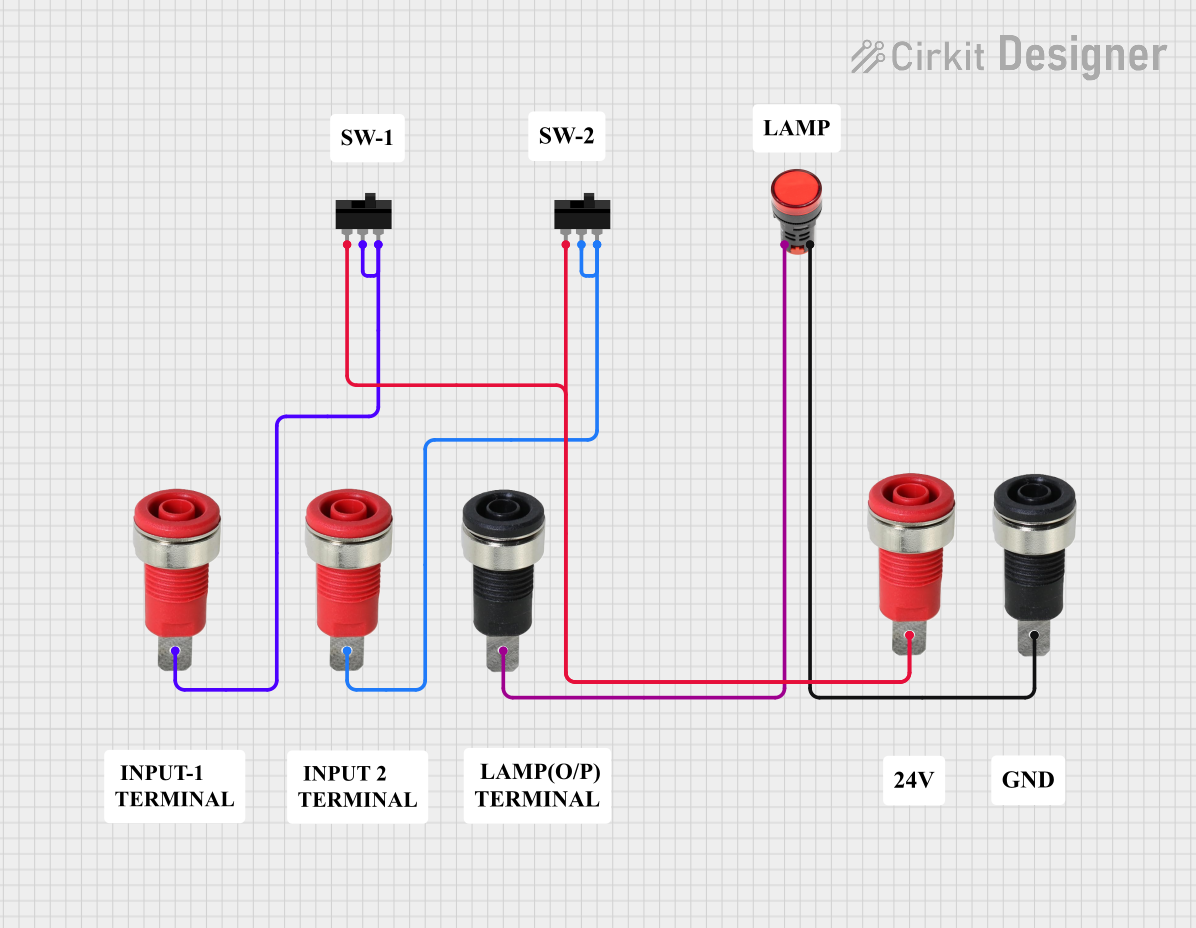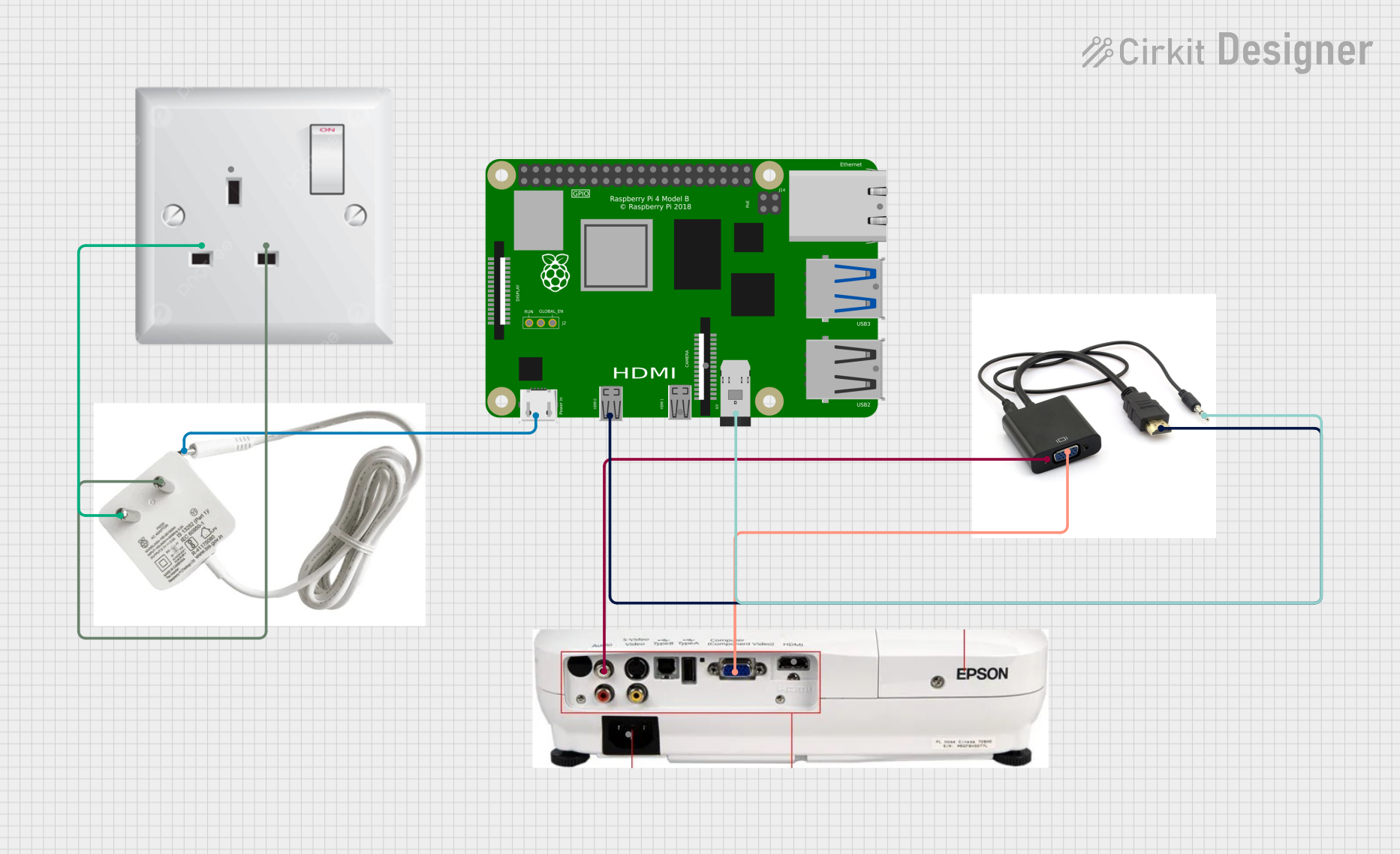
How to Use 4:1 splitter: Examples, Pinouts, and Specs

 Design with 4:1 splitter in Cirkit Designer
Design with 4:1 splitter in Cirkit DesignerIntroduction
A 4:1 splitter is an electronic component designed to take a single input signal and distribute it evenly across four output channels. This device is commonly used in applications where multiple devices need to share a single signal source, such as in audio systems, video distribution, or data communication networks. By maintaining signal integrity, the 4:1 splitter ensures that all connected devices receive a consistent and reliable signal.
Explore Projects Built with 4:1 splitter

 Open Project in Cirkit Designer
Open Project in Cirkit Designer
 Open Project in Cirkit Designer
Open Project in Cirkit Designer
 Open Project in Cirkit Designer
Open Project in Cirkit Designer
 Open Project in Cirkit Designer
Open Project in Cirkit DesignerExplore Projects Built with 4:1 splitter

 Open Project in Cirkit Designer
Open Project in Cirkit Designer
 Open Project in Cirkit Designer
Open Project in Cirkit Designer
 Open Project in Cirkit Designer
Open Project in Cirkit Designer
 Open Project in Cirkit Designer
Open Project in Cirkit DesignerCommon Applications and Use Cases
- Audio Systems: Distributing audio signals from a single source to multiple speakers or amplifiers.
- Video Distribution: Splitting video signals for use with multiple displays or monitors.
- Data Communication: Sharing a single data signal across multiple devices in networking setups.
- Testing and Prototyping: Distributing signals to multiple test points in electronic circuits.
Technical Specifications
The following table outlines the key technical details of a typical 4:1 splitter:
| Parameter | Value |
|---|---|
| Input Signal Type | Analog or Digital (varies by model) |
| Number of Inputs | 1 |
| Number of Outputs | 4 |
| Frequency Range | 20 Hz to 20 kHz (audio models) |
| Impedance (Input/Output) | 75 Ω (typical for video models) |
| Voltage Range | 0.5V to 5V (depending on signal type) |
| Power Supply | Passive or Active (varies by design) |
| Signal Loss | ≤ 3 dB (typical for high-quality models) |
Pin Configuration and Descriptions
For an active 4:1 splitter with a power supply, the pin configuration is as follows:
| Pin Number | Label | Description |
|---|---|---|
| 1 | Input | Signal input terminal |
| 2 | Output 1 | First signal output terminal |
| 3 | Output 2 | Second signal output terminal |
| 4 | Output 3 | Third signal output terminal |
| 5 | Output 4 | Fourth signal output terminal |
| 6 | VCC | Positive power supply terminal (for active models) |
| 7 | GND | Ground terminal |
Usage Instructions
How to Use the 4:1 Splitter in a Circuit
- Connect the Input Signal: Attach the signal source (e.g., audio, video, or data) to the input terminal of the splitter.
- Connect the Outputs: Connect the four output terminals to the devices or circuits that need to receive the signal.
- Power the Splitter (if Active): For active splitters, connect the VCC and GND pins to a suitable power supply as specified in the technical specifications.
- Verify Connections: Ensure all connections are secure and that the input and output devices are compatible with the splitter's specifications.
- Test the System: Power on the system and verify that the signal is being distributed evenly to all output devices.
Important Considerations and Best Practices
- Signal Compatibility: Ensure the input signal type (analog or digital) matches the splitter's design.
- Impedance Matching: Use devices with matching impedance to minimize signal loss and distortion.
- Cable Quality: Use high-quality cables to maintain signal integrity, especially for high-frequency signals.
- Power Supply: For active splitters, use a stable and noise-free power supply to avoid introducing interference.
- Avoid Overloading: Do not connect devices that exceed the splitter's output current or voltage ratings.
Example: Using a 4:1 Splitter with an Arduino UNO
If the 4:1 splitter is used to distribute a digital signal (e.g., PWM) from an Arduino UNO to multiple devices, the following code can be used to generate the signal:
// Example code to generate a PWM signal from Arduino UNO
// This signal can be distributed using a 4:1 splitter
const int pwmPin = 9; // Pin 9 is used for PWM output
void setup() {
pinMode(pwmPin, OUTPUT); // Set pin 9 as an output
}
void loop() {
analogWrite(pwmPin, 128); // Generate a 50% duty cycle PWM signal
delay(1000); // Wait for 1 second
analogWrite(pwmPin, 255); // Generate a 100% duty cycle PWM signal
delay(1000); // Wait for 1 second
}
Troubleshooting and FAQs
Common Issues and Solutions
No Signal at Outputs:
- Cause: Loose or incorrect connections.
- Solution: Verify all connections and ensure the input signal is active.
Signal Loss or Distortion:
- Cause: Poor-quality cables or impedance mismatch.
- Solution: Use high-quality cables and ensure impedance matching between devices.
Uneven Signal Distribution:
- Cause: Faulty splitter or overloaded outputs.
- Solution: Test the splitter with fewer devices and check for any damaged components.
Active Splitter Not Powering On:
- Cause: Incorrect or insufficient power supply.
- Solution: Verify the power supply voltage and current ratings.
FAQs
Q: Can I use a 4:1 splitter for both audio and video signals?
A: It depends on the splitter's design. Some models are optimized for specific signal types. Check the specifications before use.Q: Will using a splitter degrade the signal quality?
A: High-quality splitters minimize signal loss, but some degradation may occur, especially with long cables or mismatched impedance.Q: Can I cascade multiple splitters to increase the number of outputs?
A: Yes, but cascading may increase signal loss. Use an active splitter to compensate for the loss if needed.Q: Do I need a power supply for my splitter?
A: Passive splitters do not require power, but active splitters need a power supply to amplify the signal.
By following this documentation, users can effectively integrate a 4:1 splitter into their projects and troubleshoot common issues.